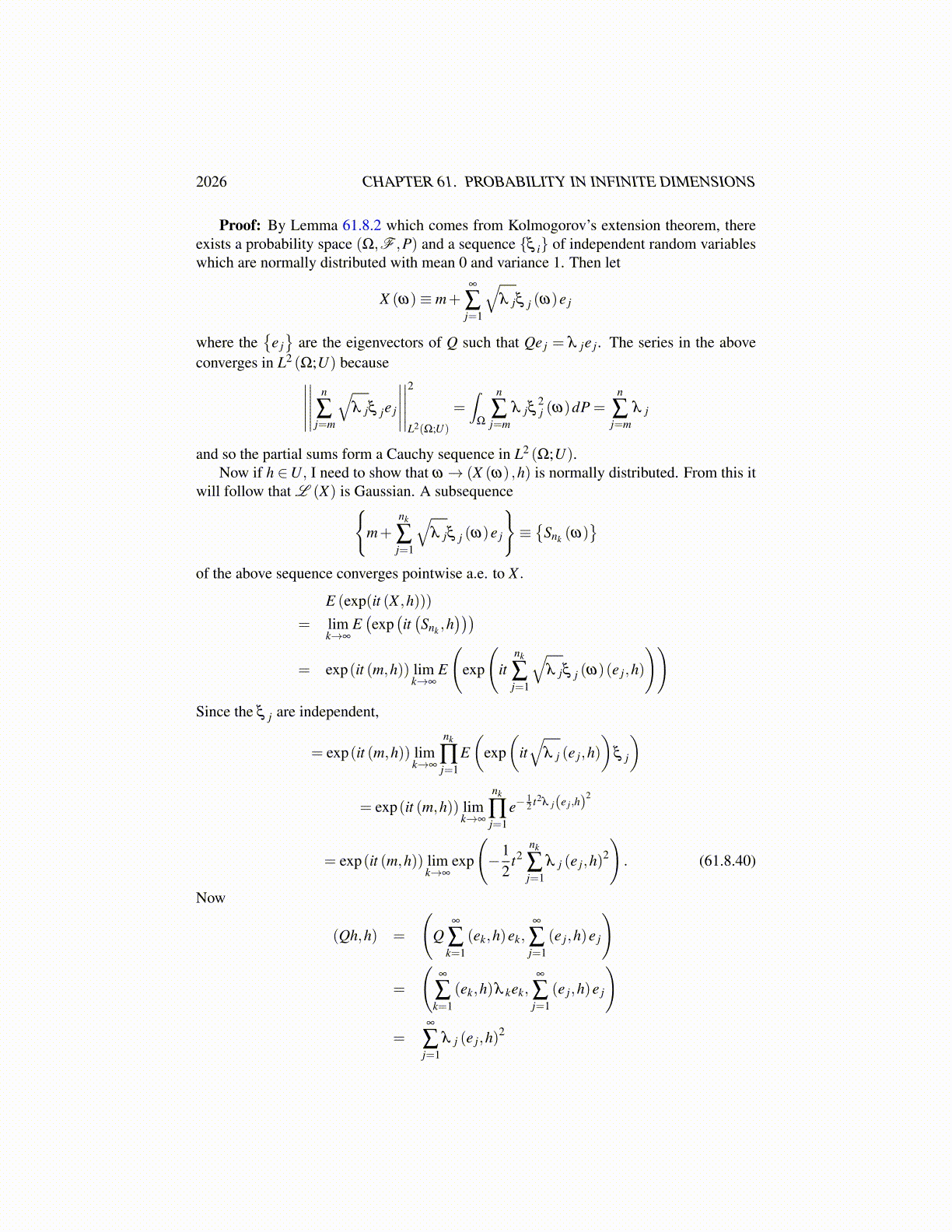
2026 CHAPTER 61. PROBABILITY IN INFINITE DIMENSIONS
Thus also ∫U
eit(x−m,h)dµ (x) = e−12 t2(Qh,h)
and letting t = 1 this yields ∫U
ei(x−m,h)dµ (x) = e−12 (Qh,h)
From this it follows ∫U
(1− ei(x−m,h)
)dµ = 1− e−
12 (Qh,h)
and since the right side is real, this implies∫U(1− cos(x−m,h))dµ (x) = 1− e−
12 (Qh,h)
Thus1− e−
12 (Qh,h) ≤
∫[||x−m||≤c]
(1− cos(x−m,h))dµ (x)
+2∫[||x−m||>c]
dµ (x)
Now it is routine to show
1− cos t ≤ 12
t2
and so
1− e−12 (Qh,h) ≤ 1
2
∫[||x−m||≤c]
|(x−m,h)|2 dµ (x)
+2µ ([||x−m||> c])
Pick c large enough that the last term is smaller than 1/8. This can be done because thesets decrease to /0 as c→ ∞ and µ is given to be a finite measure. Then with this choice ofc,
78− 1
2
∫[||x−m||≤c]
|(x−m,h)|2 dµ (x)≤ e−12 (Qh,h) (61.8.38)
For each h the integral in the above is finite. In fact∫[||x−m||≤c]
|(x−m,h)|2 dµ (x)≤ c2 ||h||2
Let(Qch,h1)≡
∫[||x−m||≤c]
(x−m,h)(x−m,h1)dµ (x)
and let A denote those h ∈U such that
(Qch,h)< 1.